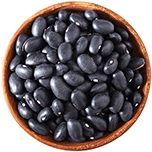The Chinese food culture has a long and profound history, with bean culture being a vibrant and significant chapter that has nourished generation after generation. How can we inherit and innovate bean culture in modern times? Zuming is one of the inheritors, explorers, and innovators. Committed to deepening its roots in the soybean products industry, Zuming aims to explore the integration of the wisdom of past sages with modern scientific techniques, delve into the brand value and cultural-tourism value of the soybean products industry, and make bean culture deeply resonate with people.
To this end, Zuming has invested in building two "Zuming Bean Culture Museums" at its production bases in Anji and Hangzhou. These museums are large-scale thematic cultural venues focusing on the culture of soybeans and soybean products. The Zuming Bean Culture Museum in Anji was completed in 2012, covering an area of 3,600 square meters, while the one in Hangzhou was completed in 2017, covering 560 square meters. Each museum consists of two main parts: a soybean product production tour corridor and an indoor exhibition hall. Visitors can learn about the traditional production process of soybean products through lifelike wax figures, recreated scenes of traditional soybean product processing, and various traditional cultural facilities. At the same time, through the "transparent factory" separated by a wall, they can observe the modern assembly-line production process of daily soybean products.
The Zuming Bean Culture Museums have received widespread recognition from all sectors of society. They have been designated as International Tourism Access Points for Social Resources in Hangzhou, Quality Education Social Practice Bases for Primary and Secondary Schools in Zhejiang Province, Industrial Tourism Demonstration Bases in Zhejiang Province, and Off-Campus Practice Education Bases for the Young Pioneers in Zhejiang Province. They have also become important routes in the industrial tourism networks of Hangzhou and Huzhou Anji.
Zuming has always been on the journey of promoting Chinese bean culture.



